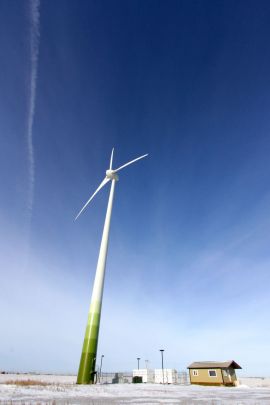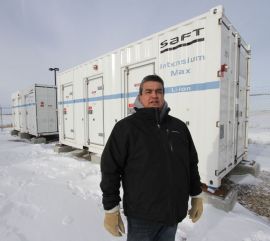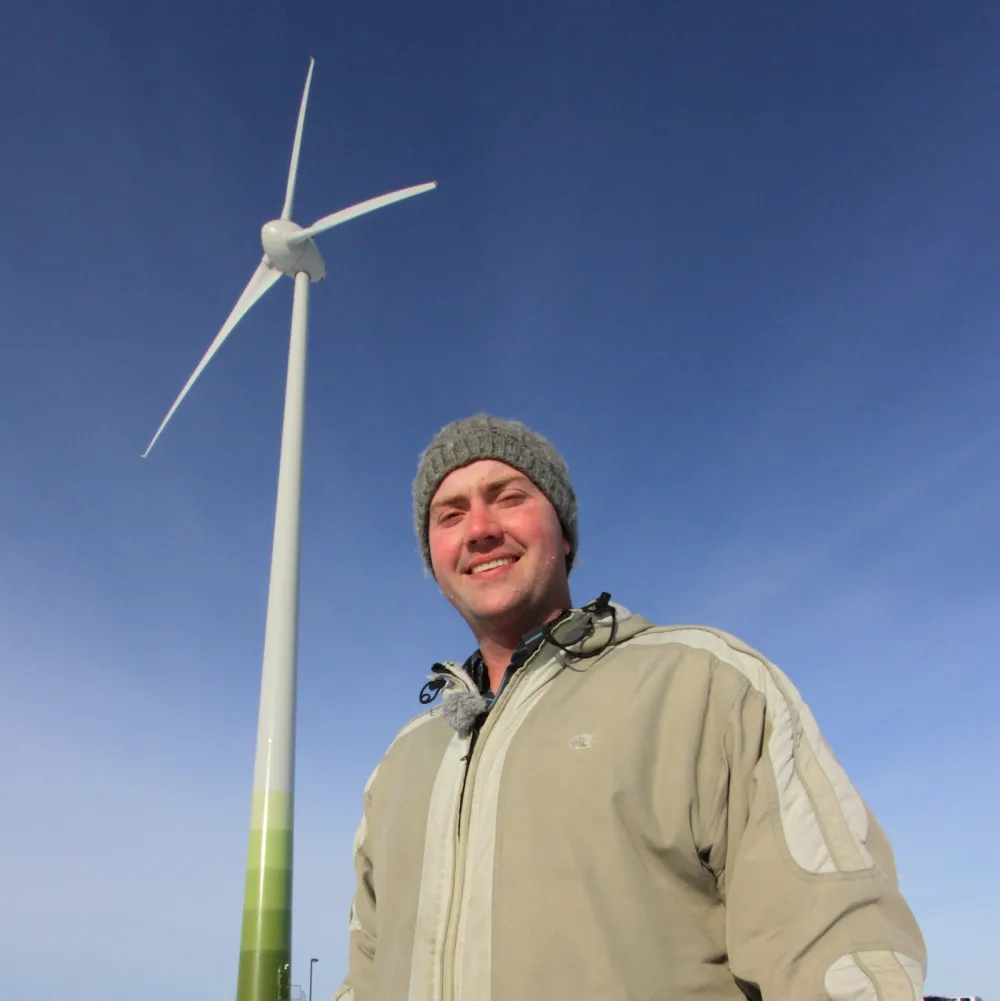 A California-based utility recently put a 100-megawatt peaker plant up for bid. This is the type of plant that can ramp electricity production up quickly to meet demand — almost always using natural gas. This time, however, the winner was a battery storage project.
A California-based utility recently put a 100-megawatt peaker plant up for bid. This is the type of plant that can ramp electricity production up quickly to meet demand — almost always using natural gas. This time, however, the winner was a battery storage project.
This may seem surprising to us in Canada, but California produces a lot of extra wind and solar power at times when it is not needed, so storing that energy and saving it for peak periods of the day helps avoid the need for new power plants.
The pace of storage innovation is being driven in part by the spectacular growth of renewable energy.
Solar PV is experiencing explosive growth around the world. Huge greenfield projects are getting built and installation records for rooftop solar are getting set every quarter.
California has a large energy storage mandate and Texas is experimenting with the technology as well. And hardly a week goes by that you don’t hear something about Tesla’s upcoming gigafactory.
So before battery storage becomes the next big thing, we wanted to understand the technology and see a finished project. For that we headed to Cowessess First Nation wind energy storage project, just east of Regina in Saskatchewan.
Storing the energy of the wind
As you head east out of Regina you can see the lone 73-metre-tall turbine to the south of the TransCanada highway.
Working with the Saskatchewan Research Council, the Cowessess First Nation installed an 800-kilowatt Enercon wind turbine and a 400-kilowatt, 744 kilowatt-hour lithium ion battery storage system. The French company Saft manufactured the batteries, which are stored in two steel shipping containers near the turbine.
The $5.5 million project wasn’t cheap, but it did have a lot of funding help. The demonstration project received funding from the federal government's Clean Energy Fund ($2.78 million), the Saskatchewan government’s Go Green Fund ($1.39 million), Indian and Northern Affairs ($248,000), and the Saskatchewan Research Council ($180,000). The Cowessess First Nation invested $1.8 million as well.
How it works: Smoothing the wind by 73 per cent
Ryan Jansen is a research engineer with the Saskatchewn Research Council. He helped the Cowessess set up the project and has been collecting the data on it. And he's learned a ton in the process.
He’s been able to smooth out the ebbs and flows from the turbine with the help of the batteries. This is a key feature for integrating more renewables onto the grid in the future.
“We could also reliably dispatch at peak times, whatever they might be, a morning peak and an evening peak, or whatever we're looking for,” says Jansen.
On a day with strong winds the Cowessess wind energy storage system is actually able to dispatch one megawatt of electricity for a full hour by producing the maximum output of the turbine (800 kilowatts) and 200 kilowatts from the batteries.
“We also tried firming; so making the wind turbine actually look like a generator with a steady output. And so we were able to achieve that at certain levels for durations of 95 per cent of the time over two or three days,” says Jansen. (Click here to watch a brief video explaining this concept in more detail)
Only about eight per cent of Saskatchewan's electricity capacity comes from wind power, but as the proportion of intermittent renewable energy increases, energy storage becomes more and more important.
Over time energy storage will change the way grid operators look at renewable energy. These grid operators assign a value to an electricity source called the capacity credit. The 800-kilowatt wind turbine gets credit for only eight per cent of its nameplate capacity: 64 kilowatts.
“Using the battery, which is highly reliable, they can count on 30 per cent of the total output of the turbine at any given time. So, now all of a sudden in the utility's eyes it's more like a 240 kilowatt sustainable power generation, rather than only 64 kilowatts,” says Jansen.
And while the worries about how much wind can be integrated into the grid have been consistently overblown, development of energy storage technology helps put that argument finally to rest.
Off-grid applications
 But on-grid applications are not the only place where these battery storage projects make sense. Charlie Delorme, a councillor with the Cowessess First Nation, hopes wind energy and battery storage will also work in remote communities, which face high costs for diesel fuel and transportation.
But on-grid applications are not the only place where these battery storage projects make sense. Charlie Delorme, a councillor with the Cowessess First Nation, hopes wind energy and battery storage will also work in remote communities, which face high costs for diesel fuel and transportation.
“As First Nations people, we want to protect the environment, the air and the water. So, I figured, if we can harness the wind for energy, I think it's a great opportunity for First Nations,” says Delorme.
“I think the dream of Cowessess with the wind turbine and the battery storage is to have the technology for northern communities where they have to use diesel generation.”
Regardless of whether it’s on-grid or off-grid, energy storage is clearly going to play a role in the clean energy grid of the future.


